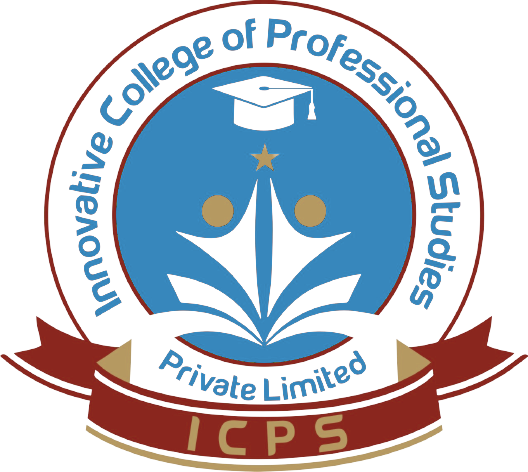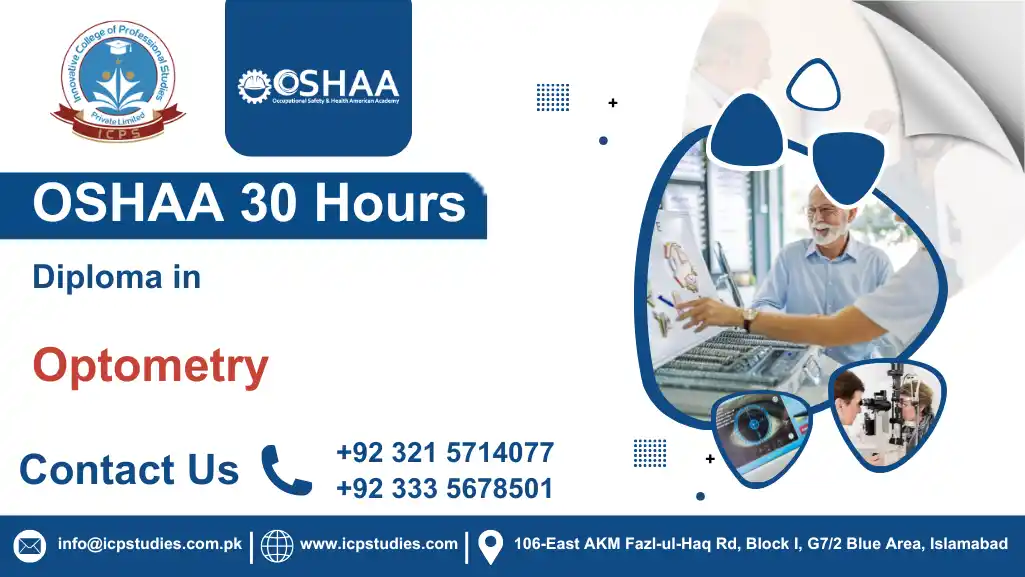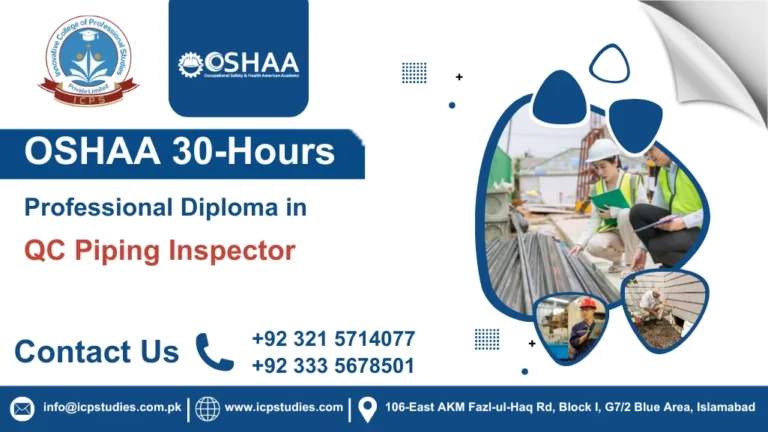The OSHAA 30-Hours Diploma in Optometry is a professionally designed training programme that delivers essential knowledge and practical skills in the field of optometry. This short yet intensive course is ideal for individuals aiming to enter the eye care sector or upskill in vision health services. With a strong focus on patient care, eye examination techniques, and optical equipment handling, the course prepares learners for real-world clinical environments. The Diploma in Optometry is developed to meet international standards in vision care and optical practice. Over the span of 30 hours, participants will explore the anatomy of the eye, visual disorders, refractive errors, and the use of diagnostic tools in optometry.
The OSHAA 30-Hours Diploma in Optometry provides a comprehensive foundation for those aiming to start a career in eye care. It enhances employability in clinics and optical stores, builds confidence through practical training, and introduces industry-relevant knowledge in a concise timeframe. Participants also gain a professional certification that adds value to their CV and boosts career progression opportunities. The course follows a structured curriculum combining theoretical knowledge and practical exposure. It is suitable for beginners and those currently employed in healthcare settings seeking to broaden their expertise in vision sciences.
The OSHAA 30-Hours Diploma in Optometry is a stepping stone towards a rewarding and impactful career in eye care. With hands-on training, expert instruction, and an internationally aligned curriculum, this programme offers the foundation for professional success in the optical and healthcare sectors. Optometry plays a crucial role in maintaining and improving vision health, with optometrists serving as primary healthcare professionals responsible for assessing, diagnosing, and treating various visual disorders. As demand for eye care services grows, so does the need for qualified professionals who can provide high-quality care to patients.
All About OSHAA 30-Hours Diploma in Optometry
Course Overview
The OSHAA 30-Hours Diploma in Optometry is a compact, skill-focused training programme designed to introduce learners to the fundamentals of vision care and optical science. Delivered over a short period, this course equips participants with essential knowledge in eye anatomy, vision testing, optical instruments, and patient interaction—making it ideal for those entering the eye care profession or seeking to enhance their existing healthcare skills.
The OSHAA 30-Hours Diploma in Optometry combines theoretical instruction with practical application, ensuring learners gain hands-on experience in optometric procedures. From understanding common eye disorders to learning how to assist with refractions and lens fittings, the course provides a solid foundation for working in clinical and retail optical settings.
Tailored to UK and international standards, the diploma opens pathways for professional growth in optometry, whether through further education or direct employment in eye clinics, hospitals, and optical stores. It is a highly accessible, beginner-friendly course with real-world relevance in the fast-growing field of vision health.
Study Units
- Introduction to Eye Anatomy and Physiology
- Common Visual Disorders and Their Diagnosis
- Optometric Eye Examinations and Techniques
- Refraction and Visual Acuity Testing
- Diagnosis and Management of Eye Diseases
- Optical Dispensing and Prescription Lenses
- Contact Lenses: Fitting and Care
- Diagnostic Equipment in Optometry
To ensure effective learning and participant readiness, applicants must meet the following minimum entry requirements:
Minimum Age
Applicants must be at least 16 years old at the time of enrolment.
Educational Background
A minimum of secondary school education is required (Matriculation, O-Levels, or equivalent). Applicants with a background in science subjects will be given preference, though it is not mandatory.
Work Experience
No prior work experience in the field of optometry is required. The course is open to both beginners and individuals currently working in healthcare or support roles who wish to specialise in vision care.
Language Proficiency
Basic proficiency in English is necessary to understand course materials and participate in practical training. Applicants should be able to read, write, and communicate effectively in English.
This diploma is tailored for a wide range of individuals who are interested in starting or advancing their careers in the field of vision care. It is especially suitable for:
- Fresh graduates or school leavers looking to enter the healthcare sector
- Individuals interested in gaining foundational knowledge in optometry and vision sciences
- Healthcare assistants or clinic support staff seeking specialised training in eye care
- Optical shop employees aiming to improve their skills in lens dispensing and customer service
- Career changers who want to explore opportunities in a high-demand healthcare field
- Community health workers and volunteers engaged in basic eye screening services
The course is beginner-friendly, requiring no previous experience in optometry, and provides practical skills that are directly applicable to real-world clinical and retail environments.
Learning Outcomes
Introduction to Eye Anatomy and Physiology
- Understand the basic structure and function of the human eye
- Identify key anatomical components such as the cornea, lens, retina, and optic nerve
- Explain the physiological process of vision and how the eye interacts with light
Common Visual Disorders and Their Diagnosis
- Recognise common vision problems including myopia, hyperopia, astigmatism, and presbyopia
- Describe symptoms and causes of various visual impairments
- Understand diagnostic methods used to identify visual disorders
Optometric Eye Examinations and Techniques
- Conduct basic optometric assessments under supervision
- Apply standard procedures for assessing eye health and function
- Record patient histories and interpret initial findings
Refraction and Visual Acuity Testing
- Perform visual acuity tests using Snellen charts and related tools
- Measure and interpret refractive errors such as nearsightedness and farsightedness
- Assist in selecting appropriate corrective lenses based on test results
Diagnosis and Management of Eye Diseases
- Identify early signs of eye diseases such as glaucoma, cataracts, and conjunctivitis
- Understand general treatment approaches and referral procedures
- Support optometrists in ongoing patient monitoring and care
Optical Dispensing and Prescription Lenses
- Interpret optical prescriptions accurately
- Assist in selecting frames and fitting lenses based on patient needs
- Understand the types and uses of single vision, bifocal, and progressive lenses
Contact Lenses: Fitting and Care
- Understand the different types of contact lenses and their uses
- Assist in fitting contact lenses under professional supervision
- Educate patients on proper lens hygiene, handling, and storage
Diagnostic Equipment in Optometry
- Identify and describe the use of common diagnostic tools such as retinoscopes and autorefractors
- Operate basic optometric equipment safely and effectively
- Maintain and care for instruments in a clinical setting
FAQs OSHAA 30-Hours Diploma in Optometry







